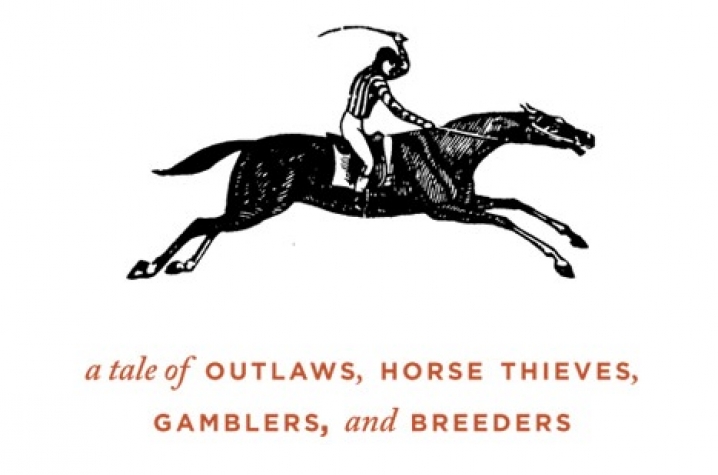From Coonskin Cap to Mint Julep

LEXINGTON, Ky. (Sept. 30, 2010) – Lexington did not become the Horse Capital of the World by chance.
And while the unique soil and limestone-packed water of the area provides a draw for bourbon and horse-lovers alike, the Bluegrass almost missed its opportunity for equine eminence following the Civil War, according to University of Kentucky history doctoral graduate and former turf writer Maryjean Wall.
How did Kentucky manage to doff its coonskin cap of brutality for a mint julep-mixed coat of antebellum gentility?
Wall's "How Kentucky Became Southern: A Tale of Outlaws, Horse Thieves, Gamblers, and Breeders," to be released by University Press of Kentucky on Oct. 1, tells the story of Kentucky's shift in identity, crediting the horse racing and breeding industries following the Civil War with Kentucky's development into the "Old South" from the widely accepted "Wild West."
Wall investigates the post bellum era of the horse industry’s growth and demonstrates how outside capitalists and local horsemen consciously introduced a southern identity to the Bluegrass in order to attract potential investors back to thoroughbred breeding and racing's original home.
Kentucky's new southern image put any concerns about violence and corruption to rest, and buyers flocked to the Commonwealth's lush farmland, effectively creating the iconic horse-farm country that Kentuckians recognize today.
"Bluegrass Kentucky’s pre-eminent position as cradle of the nation’s racehorse underwent a serious challenge from the time the Civil War ended until the time of this 'southern' turn in regional identity," Wall explained. "Had some things not changed, the Bluegrass might never have regained control of the thoroughbred industry."
After 35 years as a turf writer for the Lexington Herald-Leader and earning a master's and doctorate in history from UK, the nationally renowned journalist, who fell in love with horse racing while watching the Kentucky Derby in her native Canada at the age of 12, began to connect the pieces of Kentucky's identity to create "How Kentucky Became Southern."
"We had mansions, we had iconography, gentlemen farmers and a bucolic life; we became southern through the literature and culture of the time," Wall said. "There was a seismic change to the view of our state. We went from being seen as backwards, violent and lawless to orderly, patrician, segregated…moonlight and magnolias."
The adoption of southern ideals complicated Kentucky’s social structure and attitude toward race, as many of the state’s best breeders, trainers and jockeys were African American, according to Wall. In the years following the Civil War, African Americans were highly visible on the racetrack, with famous figures such as Isaac Murphy leading some of the industry’s most valuable horses to victory. By 1900, however, African Americans were virtually absent from the horse business.
"Following the war, urban life was out of control," Wall explained. "People began looking back to the simplicity of the Old South with its patriarchal squire and manor." Cheering African-American jockeys down the track did not fit into the picture.
The appearance of more women at the racetrack also coincided with a changing industry. "Females lent purity and gentility to the sport," said Wall. "The industry was eager to attract women to the grandstands; a popular image for the track was women gambling with gloves."
The Bluegrass has forever been the heart of the horse business to many, but Wall explains the reality behind one of the Commonwealth's most recognizable industries and moves beyond common misconceptions.
"We don't really know what came first, but there was a happy convergence of economics, culture and social influences to Kentucky's change in southern identity," said Wall. "Kentuckians today do not worry enough about the possibility of the industry moving away from the Bluegrass. My book is about a period of time when it nearly did, and it could happen again."
Kentucky's horse industry continues to change, with an increasingly global market and expanded opportunity into new arenas, like the World Equestrian Games.
"There is increased interest in diversifying the horse industry in Kentucky," Wall said. "At one time, farms were also diverse, with crops and cows, in addition to thoroughbred race horses. Maybe we're coming back to that diversity."
According to Wall, there is an increased interest in buying property for show horses as well, and Kentucky's climate, the positive experience of WEG visitors and participants, as well as Horse Park renovations, are all playing major roles. "WEG will put us on the map, and show the world something," said Wall. "We've got minerals, we've got the grass…many people believe that there is something in our land. But the grass isn't enough. The grass didn’t help us keep the industry here before."




